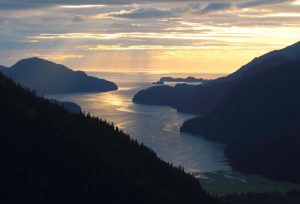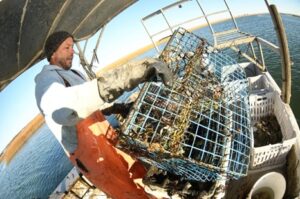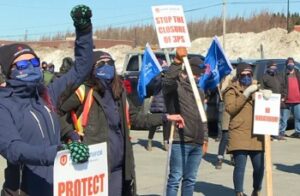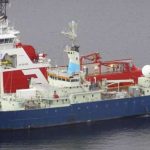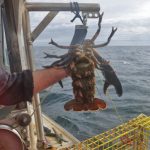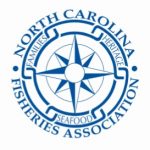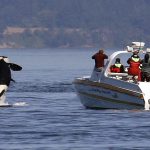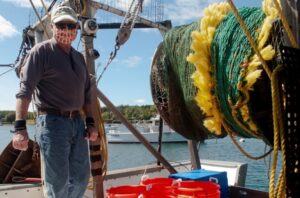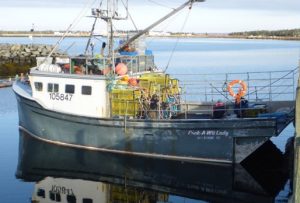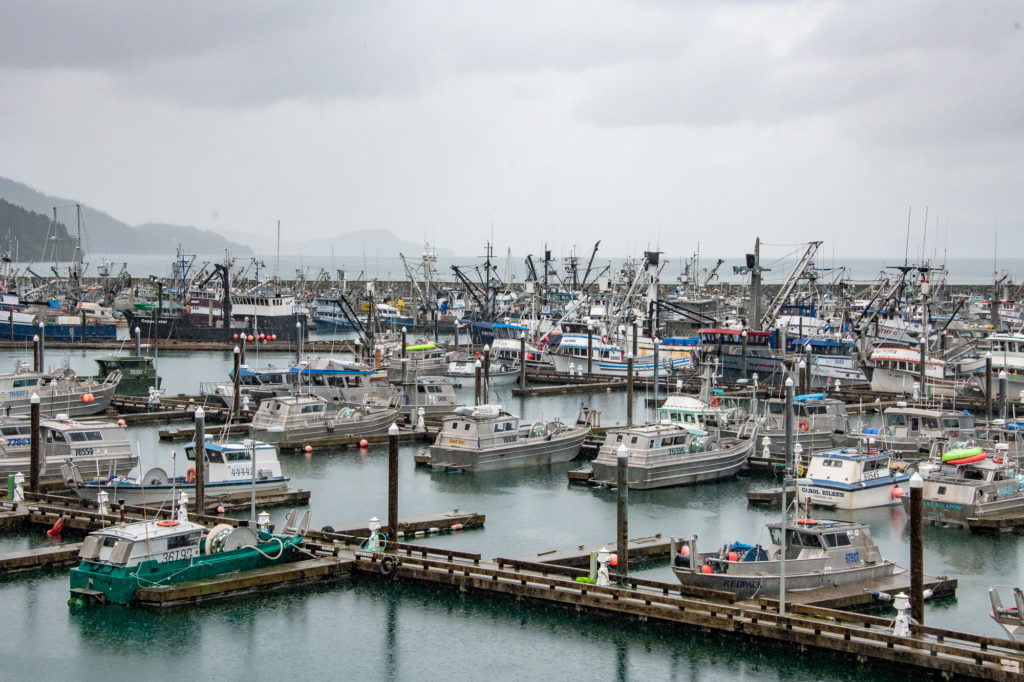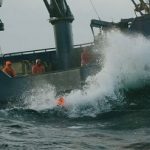Tag Archives: catch-share-system
Flaws in Catch-Share System Frustrate Scallopers
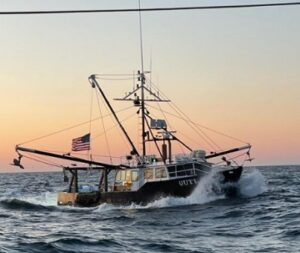 Every year, regulators set a maximum number of pounds of scallops the entire small-boat fleet is allowed to catch. Each vessel owns or leases a share of that total, which determines how many pounds of scallops it can land that year. That share is called quota. Owning or leasing one percent in quota, for example, allows a vessel to take one percent of the total regulators set. Scallopers say the major flaw in this so-called catch-share system, which is also used in a handful of other federal fisheries, is that it requires them to pay huge fees every year to lease quota. It’s an expensive extra cost, they argue, that makes it especially hard to get into the business. “It’s a failed system,” said Damian Parkington of Wellfleet, owner of the F/V Roen Keil, “and it’s done a number on small business in coastal communities.” >click to read< 21:45
Every year, regulators set a maximum number of pounds of scallops the entire small-boat fleet is allowed to catch. Each vessel owns or leases a share of that total, which determines how many pounds of scallops it can land that year. That share is called quota. Owning or leasing one percent in quota, for example, allows a vessel to take one percent of the total regulators set. Scallopers say the major flaw in this so-called catch-share system, which is also used in a handful of other federal fisheries, is that it requires them to pay huge fees every year to lease quota. It’s an expensive extra cost, they argue, that makes it especially hard to get into the business. “It’s a failed system,” said Damian Parkington of Wellfleet, owner of the F/V Roen Keil, “and it’s done a number on small business in coastal communities.” >click to read< 21:45
Share this post
Hmm. Fishing quotas causing concern in Morro Bay
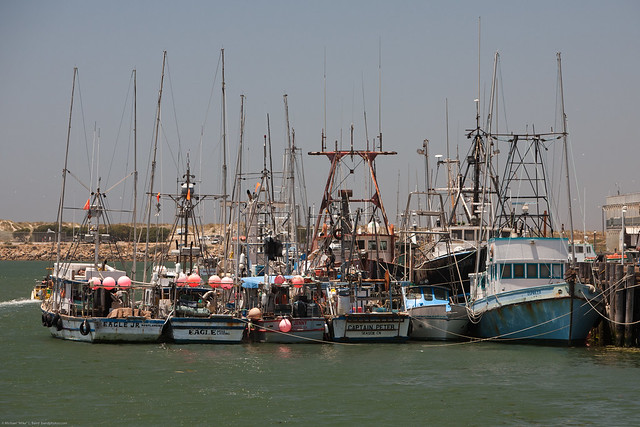 Commercial fishing in Morro Bay could suffer a big blow come January 1. That’s because a two-year old program called the “Catch Share System” will allow fishermen to buy and sell fish catch quotas to the highest bidder after the New Year. “It was a big push by most environmental groups across the nation,” said Morro Bay fisherman Mark Tognazzini. “They thought this was the answer to all answers and it really has not been.” Read [email protected] 11:31
Commercial fishing in Morro Bay could suffer a big blow come January 1. That’s because a two-year old program called the “Catch Share System” will allow fishermen to buy and sell fish catch quotas to the highest bidder after the New Year. “It was a big push by most environmental groups across the nation,” said Morro Bay fisherman Mark Tognazzini. “They thought this was the answer to all answers and it really has not been.” Read [email protected] 11:31
Share this post
In rural Alaska, the spoils of the sea set village against village
A generation ago, organizers envisioned federally guaranteed shares of the pollock catch that would create a rising tide of funds to lift up poor, isolated villages where jobs and hope are scarce… Pollock did succeed, wildly. The dollars  hat flowed into the Community Development Quota Program, as the catch-share system was called, created a hydra-headed nonprofit money machine. Six nonprofit groups arose on the Bering Sea shore, and they have invested mightily in ships, real estate and processing plants. Over two decades, the groups amassed a combined net worth of $785 million… But the results on the ground, in rural community and economic development, have been deeply uneven, and completely nonexistent for many people who still gaze out to the blinking lights of the factory ships and wonder what happened. continued@NYT
hat flowed into the Community Development Quota Program, as the catch-share system was called, created a hydra-headed nonprofit money machine. Six nonprofit groups arose on the Bering Sea shore, and they have invested mightily in ships, real estate and processing plants. Over two decades, the groups amassed a combined net worth of $785 million… But the results on the ground, in rural community and economic development, have been deeply uneven, and completely nonexistent for many people who still gaze out to the blinking lights of the factory ships and wonder what happened. continued@NYT
Share this post
Can you spot the winners?
I’m sure it’s just a coincidence that 2 “big winner” sectors from the catch shares scam, are the same ones that have also been the puppets of the ENGOs. Also coincidence that these same 2 sectors are the ones (and only ones) represented on the New England council. Isn’t it interesting how they worked with the ENGO’s and NMFS every step of the way, and somehow came out as big winners? Click on image for larger view.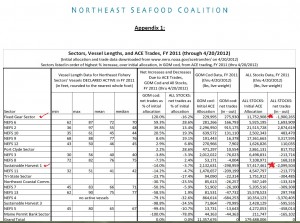
Share this post
Sometimes the mask slips
When Jane Lubchenco was appointed as the head of NOAA (the National Oceanic and Atmospheric Administration) in 2009, I believe that it enabled an important part of a decades long plan to transform America into just another member of the global community, from the inside. This has enabled these “Fabian Socialists” to accelerate the process of destroying the commercial fishing industry in the USA, to further their long-term vision of sustainable international fisheries.
Dr. Lubchenco has demonstrated a total disinterest in the economic crisis that she has created in places like Gloucester Mass, and all along the coasts of New England and across this great country. She has gone to great lengths to completely avoid addressing the issues that are important to our fishermen.
In 2011, she declined to testify at a U.S. Senate subcommittee invitation in Boston called “How is NOAA managing funds to protect the domestic fishing industry”. Makes sense if you look at the facts (as we have), and find that she isn’t interested in protecting the domestic fishing industry at all. Dr. Lubchenco has always been looking at a bigger picture.
I’d like to highlight some recent comments that she made at a RFMO (Regional Fisheries Management Organizations) conference in Belgium on June 1st, 2012. This doesn’t happen often, as she tends to avoid the spotlight, but on this day it seems that her mask slipped. She made numerous comments that represent (what I believe to be) her true motivation for the decisions that she makes at NOAA.
Share this post
Fisherynation Editorial – Jane (eliminator) Lubchenco’s Consolidation Porn Production. Paid for with your fish.
So. I’m sittin’ here rackin’ my brain, just wondering, what beauracratic, moronic, opportunist would commission a group of dream team bean counters, with some financial hocus pocus wizards to invent a $180 million dollar loan package (that’s what it is) for a desperate, beleaguered, broken industry, and wondering what collateral is being used to support this Jane (eliminator) Lubchenco, consolidation porn production?!!
My fish. Your fish. Our fish.
I mean, man. You know none of the politicians would come up with an idea like that?!
They BURN money. They don’t expect it to provide a return. They shovel it to get rid of problems. Shut people up. Closure.
Then they do it again for the next big thing!
But this. THIS is REALLY something!
A $180 Million dollar loan to buy up the rest of the guys that our politicians say they care about, the little guys, freeing up all kinds of fish to finance the thing.
$15 Million for at sea monitors that NOAA was looking at from their budget because it was a small boat breaker.
Paid for with our fish.
Slick little fix for Andy and his gig from Team Dismantle.
Good score, Drew!! aunty got yer back!
Paid for with our now more expensive fish.
$30 MILLION so the big boys can have more fish, plus $5 million for sector management that should after two years should be self sufficient by now, and will be seeing an exodus of the disenfranchised.
And a paltry $7.5 MILLION for collaborative and “traditional” research?
From what I’ve seen of “traditional” lately from Team Eliminator, “traditional” should continue to be funded from “traditional” sources. Like the NOAA budget, while this industry aligned with schools like SMAST and VIMS get us what we need. Real results, not that eco system crap Rusty does.
That “traditional” has been continuous trade offs, as was revealed at the yellow tail working group meeting. Enough trade offs.
I say $7.5 Million for collaborative research should come from the NOAA budget. Its time the people’s money was used properly.
This thing has a familiar odor.
ABOLISH CATCH SHARES NOW!


































